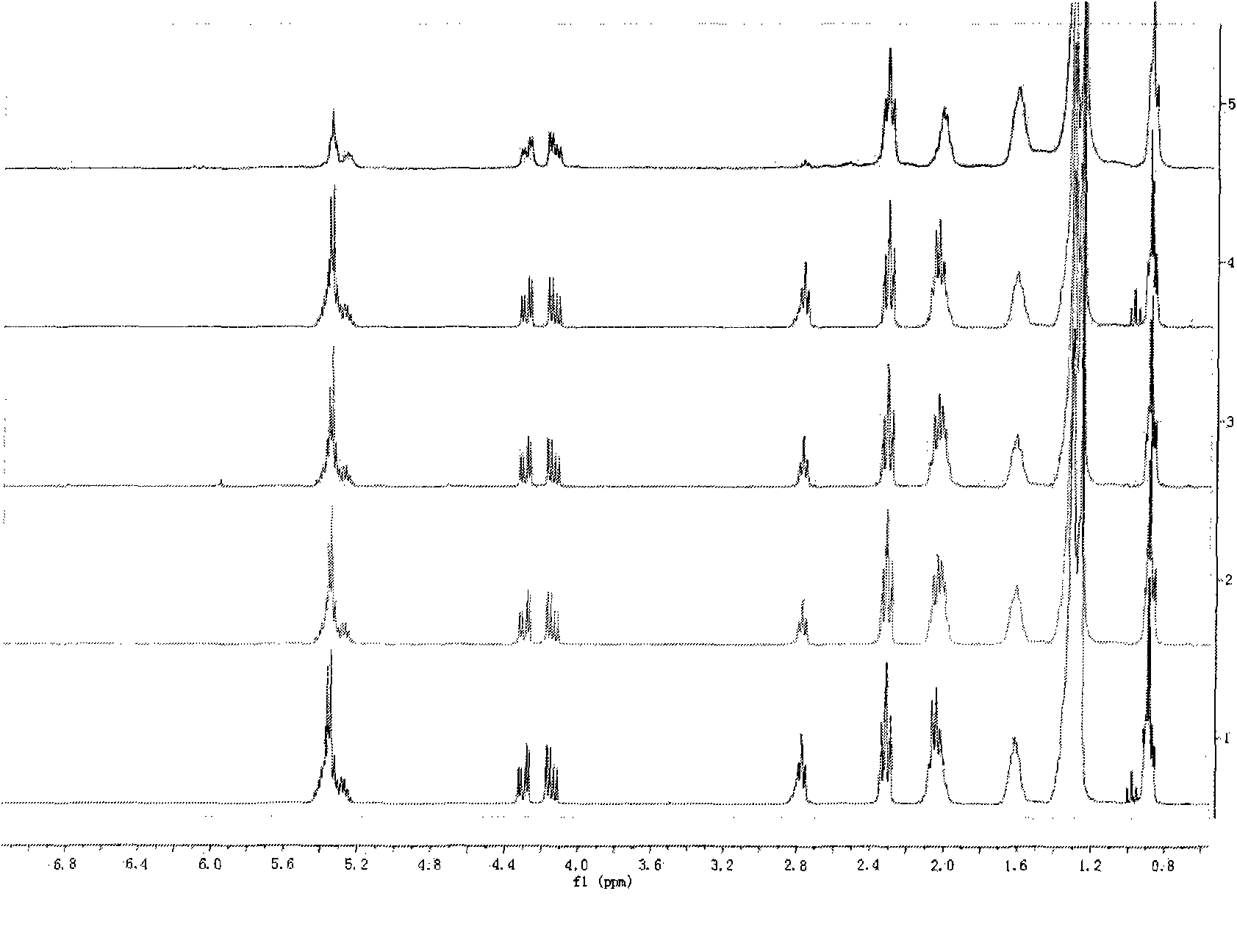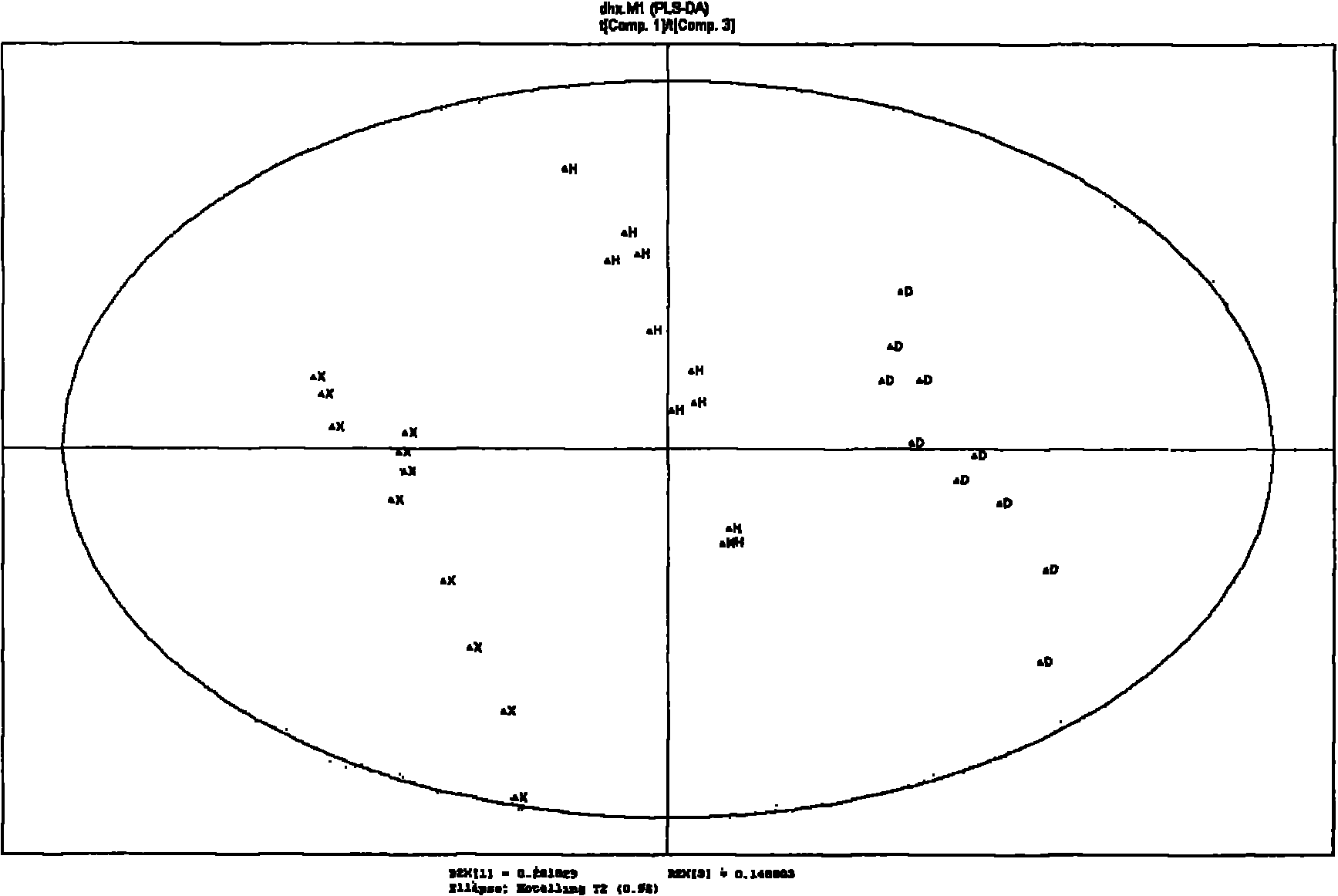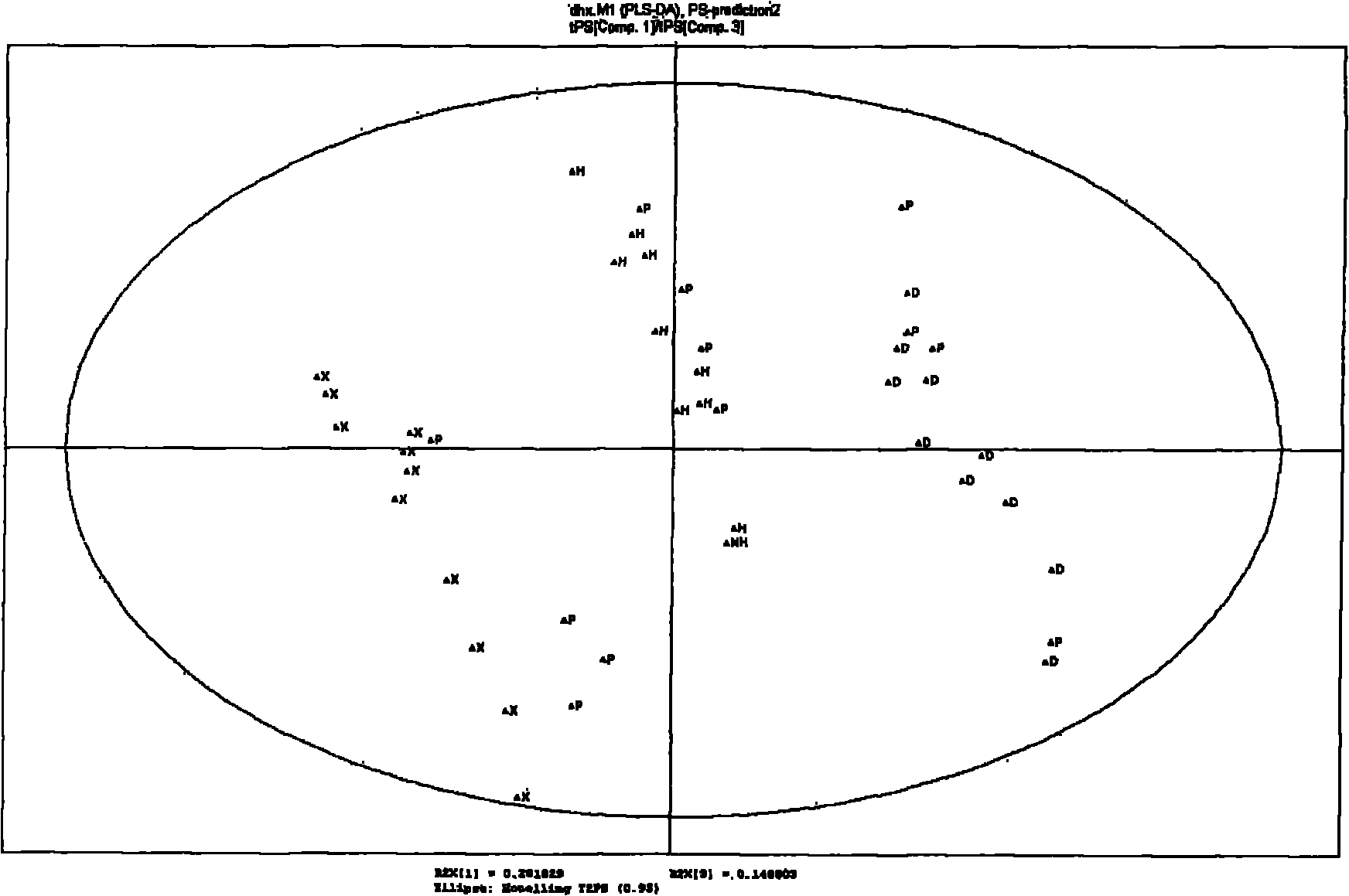A method for identifying the quality of edible oil by combining nuclear magnetic resonance with pattern recognition
A technology of nuclear magnetic resonance and pattern recognition, applied in the direction of using nuclear magnetic resonance for analysis, etc., can solve problems that need to reach a relatively high level to be detected, and achieve fast test speed, short time-consuming, and reduced workload Effect
- Summary
- Abstract
- Description
- Claims
- Application Information
AI Technical Summary
Problems solved by technology
Method used
Image
Examples
Embodiment
[0021] 1. Test materials
[0022] Soybean oil, peanut oil, sesame oil, blended oil, waste oil, sample tube, deuterated chloroform (CDCl 3 ).
[0023] 2. Test equipment
[0024] BRUKER Avance 300 superconducting NMR spectrometer.
[0025] 3. Preparation of test samples
[0026] Take 20 microliters of soybean oil, add 0.6mL CDCl 3 Dissolve and place in a Φ5mm sample tube to obtain the sample solution to be tested. According to the law, 14 parts of soybean oil, 15 parts of peanut oil, 15 parts of sesame oil, 10 parts of blended oil, 11 parts of waste oil and 10 parts of blended oil mixed with 5% (V / V) waste oil were obtained.
[0027] 4. Test process
[0028] 1. Spectrum determination
[0029] Determination conditions: temperature: 295K, CDCl 3 For internal locking, each spectrum is scanned 16 times, the spectrum width is 20ppm, the pulse interval is 2s, and the pulse sequence is zg30.
[0030] The sample solution prepared above was measured on the nuclear magnetic reson...
PUM
 Login to View More
Login to View More Abstract
Description
Claims
Application Information
 Login to View More
Login to View More - R&D
- Intellectual Property
- Life Sciences
- Materials
- Tech Scout
- Unparalleled Data Quality
- Higher Quality Content
- 60% Fewer Hallucinations
Browse by: Latest US Patents, China's latest patents, Technical Efficacy Thesaurus, Application Domain, Technology Topic, Popular Technical Reports.
© 2025 PatSnap. All rights reserved.Legal|Privacy policy|Modern Slavery Act Transparency Statement|Sitemap|About US| Contact US: help@patsnap.com



